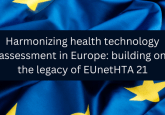EMA seeking feedback on the use of single-arm trials for regulatory decision making

A new reflection paper published by the EMA outlines the agency’s current thinking on the evidence generated from single-arm trials and their use in marketing authorization applications.
The European Medicines Agency (EMA) has recently announced a new reflection paper is open for comment that aims to promote scientific discourse on the principles and potential obstacles related to single-arm trials (SATs) and enhance their planning and execution. The agency is seeking feedback from stakeholders by 30 September 2023.
Whilst randomized clinical trials (RCTs) remain the ‘gold standard’ for generating clinical evidence, SATs are more frequently being used to generate pivotal evidence. A recent study indicated that between 2010 and 2019, 22 anticancer products were approved by the European Commission based on the evidence from SATs. In therapeutic areas, such rare diseases, or for certain conditions like rare cancers, SATs may be required where the population being studied is often very small.
The reflection paper, the EMA note, outlines the current thinking about establishing efficacy of SATs and many of the consideration the EMA provide can also be applied to SATs that are used to establish safety. The conditions when SATs may be considered acceptable as pivotal evidence are not included within the paper.
Several considerations related to the design, conduct, interpretation and assessment of SATs are presented in the paper, which include choice of endpoints, trial populations, role of relevant external information and statistical principles.
Due to the lack of comparators within SATs, these trials are subject to bias and, as the agency notes, “multiple potential sources of bias throughout the design, conduct, analysis and reporting of SATs in the estimation of the treatment effect need to be addressed.” The paper lists 15 possible sources of bias along with mitigation strategies to reduce the risk and ensure the robustness of the results from SATs.
While these strategies may be considered necessary to reduce the risk for bias, they cannot be considered sufficient to fully remove bias and formal proof that treatment effect estimates are unbiased is impossible. Demonstration that the mitigation strategies were applied may thus not be sufficient to alleviate concerns about biased results derived from a SAT.
The EMA state that the reflection paper has been adopted by EMA’s human medicines committee (CHMP) with contributions from the Committee for Advanced Therapies (CAT), the Methodology Working Party (MWP) and the Oncology Working Party (ONCWP). The final document is due to be published in 2024 when feedback from stakeholders has been considered.
You may also be interested in
- Evaluating the role of single-arm trials in oncology decision-making: an interview with Sorrel Wolowacz, RTI Health Solutions
- Utilizing real-world synthetic control arms to demonstrate the comparative effectiveness of pralsetinib in non-small cell lung cancer patients: an interview with Sreeram Ramagopalan
- Single-arm oncology trials and the nature of external controls arms






